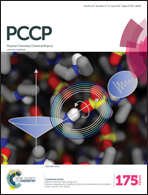MOF-derived binary mixed metal/metal oxide @carbon nanoporous materials and their novel supercapacitive performances
Abstract
Mixed cobalt and manganese oxides embedded in the nanoporous carbon framework (M/MO@C) were synthesized by the direct carbonization of a binary mixed-metal organic framework (CoMn-MOF-74) for the first time. The unique M/MO@C carbon materials maintained the primary morphology of CoMn-MOF-74, and showed a uniform dispersibility of Co, MnO and CoO nanoparticles in the carbon matrix, and therefore greatly increased the conductivity of the M/MO@C materials. A series of M/MO@C samples were tested as the electrode materials for supercapacitors, and a remarkable specific capacitance of 800 F g−1 was obtained using the M/MO@C-700 sample at a current density of 1 A g−1 in 6 M KOH electrolyte. Moreover, the M/MO@C sample showed a good cycling stability with a capacitance retention of 85% after 1000 cycles. It is also found that the optimized carbonization temperature is a critical parameter to obtain such a M/MO@C nanoporous carbon framework with the best capacitive performances. The present approach is convenient and reproducible, which could be easily extended to the preparation of other M/MO@C composites with excellent electrochemical performances.


 Please wait while we load your content...
Please wait while we load your content...